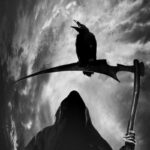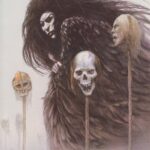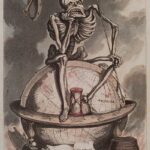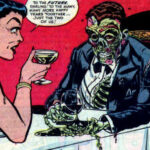Omen
In most parts of the world the raven is considered a prophet and a bad omen. The Arabs call it Abu Zajir which means “Father of Omens.” In Ireland it was once domesticated for use in divination practices and the term “Raven’s Knowledge” meant second sight. In many areas of the ancient world, the sight of a raven flying to the right was a good omen, whilst a raven flying to the left was an evil one. Ravens deserting their nests were very bad omens and popular superstition declared that if the ravens ever fled the Tower of London, the monarchy would fall.
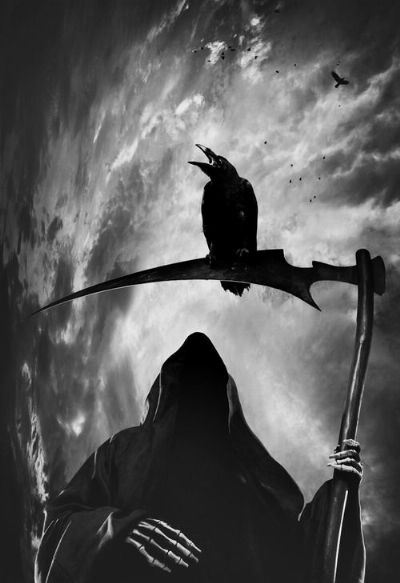
Like the crow and the raven, the blackbird is considered a bad omen. However, the sight of two blackbirds sitting together is a symbol of peace and a good omen.
According to shamanic conceptions, the croaking of a raven is not merely a sign of getting news of someone’s death, but represents actually the speech of the deceased. In this case, it would be the soul of the dead speaking from the other world.
Symbol
In spite of its dark appearance, the raven is often a solar symbol. In Greece he was sacred to Apollo, the god of light. In China, a three-legged raven lives in the sun. His legs symbolize dawn, noon, and dusk. There used to be ten sun-ravens but they gave off such intense light and heat that an archer had to shoot nine of them in order to preserve life on earth. A red raven is the emblem of the Chinese Chow dynasty.
Ravens were a symbol of sin especially the sins of gluttony, stealing, and false teaching. They were nicknamed “thieving birds” and Icelandic children were taught that drinking from raven quill straws would cause them to become thieves. Evil priests were said to turn into ravens when they died. To European Christians, this creature is the antithesis of the innocent white dove.
But in some African and Native American traditions, he is a beneficent guide whose keen sight allows him to issue warnings to the living and to lead the dead on their final journey.
For latins, the raven’s cry means “Tomorrow! Tomorrow!”. Some interpret it as a symbol of the foolish sinner who puts off conversion while for others it is the hope of a new and better day. To North American Eskimos, the raven’s cry sounded like “Kak, kak, kak!” which means “a deer-skin blanket.” According to their legends, the raven’s cries warned people not to forget their blankets when they moved.
The raven is a symbol for solitude and an attribute of several saints whom ravens fed in the wilderness, including St. Anthony Abbot, St. Paul the Hermit, and St. Benedict. The raven has long been a symbol of divine providence. [Psa 147:9; Job 38:41] Many remember the Lord’s command to consider the sparrow and the lilies, but the words, “Consider the ravens, for they neither sow nor reap, which have neither storehouse nor barn; and God feeds them,” are seldom brought to mind. [Lk 12:24]
The raven symbolizes filial gratitude and affection, wisdom, hope, longevity, death, and fertility. In alchemy, it represents change and the advanced soul dying to this world. It remains a frequently used symbol in modern magic, witchcraft, and mystery.
In the telling of myths and legends, the crow frequently took the place of the raven. This is the case in most of the Northwest Pacific myths recorded above and in the story of Apollo and Coronis. The Irish war-goddess, Badb, often took on the shape of a crow. In classical mythology, this bird is an attribute of Cronus or Saturn and Athena, the goddess of wisdom, victory, and the arts.
Like the larger raven, the symbolic crow is associated with the sun, longevity, beginnings, death, change, bad luck, prophecy, and Christian solitude. It, too, is considered a messenger of the gods. Among ancient Greeks and Romans there were some who considered the crow a bad omen and the raven a good one.
The crow is associated with motherly love and spiritual strength. It was believed that fairies turned into crows in order to cause trouble. In heraldry, a crow was used to indicate a dark person such as a Moor or a Saracen. In Egypt, two crows, like two doves, were an emblem of monogamy.
Death
Eaters of carrion, ravens were messengers of death, pestilence, and battle. It was believed that these flesh-hungry birds could smell the scent of death upon a person before they died – even through the walls of a house. In paintings, the raven may be seen flying over battlefields, eager to feast on the dead. After the Battle of Armageddon, ravens will descend upon the lands of the wicked. [Isa 34:11].
Morrigane, the celtic goddess, is accompanied by three ravens: Babd, Acha and Neman, the three goddess of war.
These birds were thought to have a special taste for the bodies of hanged criminals and to enjoy plucking out the eyes of sinners. Christians thought they carried off the souls of the damned and associated this bird with Satan.
Painted black
When the rain stopped, Noah first sent a white raven to explore the sea. Instead of returning to the Ark, this bird “kept going to and fro until the waters had dried up from the earth.” [Gen 8:7]. After the raven’s failure, Noah sent a hite dove. The raven was forced to ciomer back to the Arch where he was blackened and condemned to eat carrion.
According to Ukrainian legend, ravens used to have many beautifully colored feathers and a lovely song but after the Fall they started eating carrion. This habit destroyed their voices and blackened their plumage. Their former loveliness is expected to be returned to them when Paradise is restored.
In the Pacific Northwest, the raven’s feathers were blackened when his brother-in-law smoked him over a fire as a punishment for his trickery.
White or albino crows were so prized that fowlers tried to change the color of their baby crows by soaking them in various deadly formulas. Among the Celts, the white crow was the emblem of the heroine, Branwen. Her heroic brother, Bran, was pictured as a raven. In North America, the Kiowas taught that the white crow turned black from eating snake eyes.
The spy
Greeks believed that Apollo turned the raven black when the bird informed him of the unfaithfulness of his lover, Coronis. This episode gave the raven a reputation as a tattler, a spy, and a divulger of secrets.
In Norse mythology the omniscient god Odin had a pair of ravens called Hugin (thought) and Munin (remembrance) living upon his shoulders or throne. Each morning they flew around the earth observing everything and questioning everyone, even the dead. During the night they returned to their master and whispered all that they had seen and heard. Sometimes Odin turned himself into a raven.
Familiars
A familiar, or an imp, is an attendant subordinate demon in the form of an animal. Familiars behaved in ways that no natural pet was believed to. They ran errands, brought messages, and aided in devil worship.
Ravens are known around the world as shapeshifters and humans are often changed into ravens by an enemy’s curse. They are prophets, spell-casters, and messengers of the gods. Gods and goddesses of war and thunder such as Badb have ravens as their attributes. They are early emblems of the Danes and the Vikings.
The beautiful song of the blackbird makes it a symbol of temptations, especially sexual ones. The devil once took on the shape of a blackbird and flew into St. Benedict’s face, thereby causing the saint to be troubled by an intense desire for a beautiful girl he had once seen. In order to save himself, St. Benedict tore off his clothes and jumped into a thorn bush. This painful act is said to have freed him from sexual temptations for the rest of his life.
A trickster
Among the natives of the North American Pacific Coast, Raven is a hero, messenger, creator of the world, thief, and trickster. He taught the first humans how to care for themselves and make clothes, canoes, and houses. His position in Native American folklore is similar to that of the wily coyote. Some say he was born of the primordial darkness; others that he was born in the coffin of his dead mother and nourished on her entrails. He was a provident creator who brought sunlight, vegetation, animals, and the tides into the world for the benefit of humankind. He took the animals two by two onto a raft, after the manner of Noah, in order to save them from a great flood. After all the good he had done for humankind, Raven wished to marry a woman but the men refused to allow this. In revenge, Raven created mosquitoes from crushed leaves to pester them for all time. When Raven brought light to mankind, they were so frightened by it that they scattered to all corners of the world.

